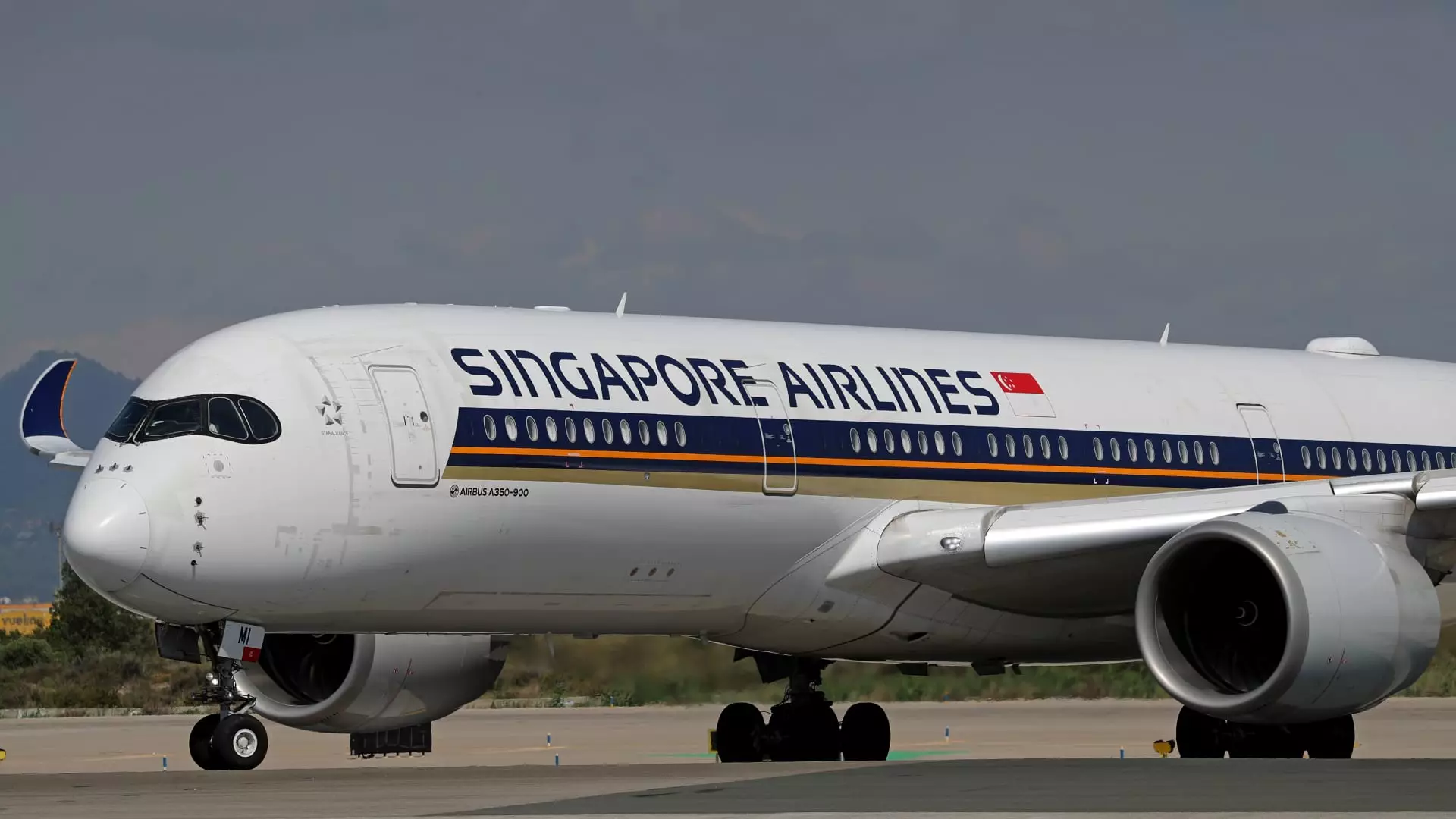Singapore Airlines has recently experienced a notable downturn in its financial performance, raising concerns among investors and stakeholders. The airline’s net profit for the first half of its fiscal year—from April to September—plummeted by nearly 50%, landing at 742 million Singapore dollars (approximately $559.12 million). This figure starkly contrasts with the previous year’s profits of 1.44 billion Singapore dollars, reflecting a decrease of 48.5%. Compounding this issue, the operating profit also suffered a comparable drop of 48.8%, descending from 1.55 billion Singapore dollars to just 796 million Singapore dollars. Interestingly, the airline managed to record a modest revenue growth of 3.7%, achieving 9.5 billion Singapore dollars, indicating that top-line growth is not translating into bottom-line profitability.
The chief culprits cited for this significant dip in profits are increased capacity and intensifying competition in critical markets. The airline’s Chief Commercial Officer, Lee Lik Hsin, acknowledged the growing competitive landscape as other airlines resume services that mirror pre-COVID levels. This has not only led to a drop in yields but has also elevated operational pressures. While passenger traffic did rise by 7.9% on a year-on-year basis, it fell short of the airline’s capacity expansion of 11%. Consequently, the passenger load factor—which gauges the extent to which an airline’s passenger carrying capacity is utilized—fell by 2.4 percentage points to 86.4% over the same period.
Despite the challenges, Singapore Airlines has opted to continue expanding its capacity rather than retreating in the face of competition. Lee emphasized that even with the existing pressures, the airline is committed to scaling its operations. The airline seems to be banking on robust demand for air travel in the latter half of the financial year, despite acknowledging that the competitive landscape is likely to remain intense. This strategic choice to maintain growth signals a willingness to invest in future profitability, albeit with short-term sacrifices.
To further bolster its offerings, Singapore Airlines announced a substantial investment of SG$1.1 billion for a cabin retrofit program targeting its fleet of 41 long-range and ultra-long-range Airbus A350 jets. The initiative aims to modernize the cabins and enhance passenger experience, with the first retrofitted aircraft expected to be operational by 2026, and the entire project slated for completion by 2030. This forward-looking investment illustrates the airline’s focus on long-term sustainability and competitiveness, even in the face of current struggles.
Singapore Airlines’ current predicament highlights the impacts of external market pressures on the aviation industry. While the company navigates a challenging landscape characterized by heightened competition and fluctuating passenger demand, its strategic commitment to capacity growth and fleet modernization may pave the way for recovery in the future. Stakeholders will keenly watch how these decisions play out, particularly as the airline continues to strive for innovation and excellence in service amidst the evolving dynamics of global air travel.

